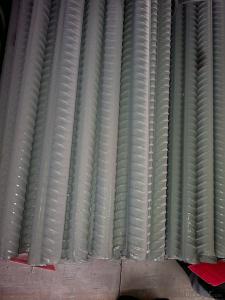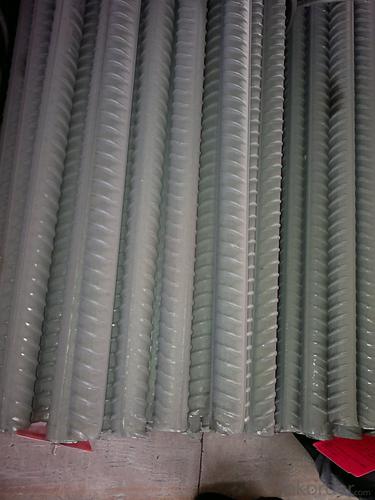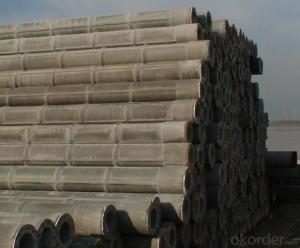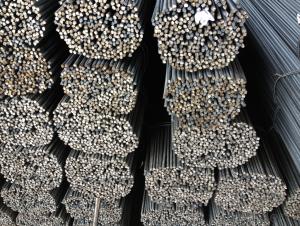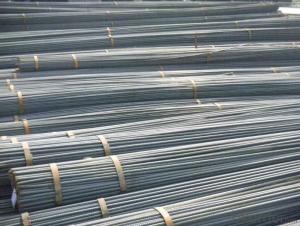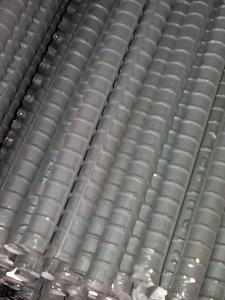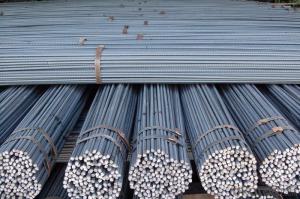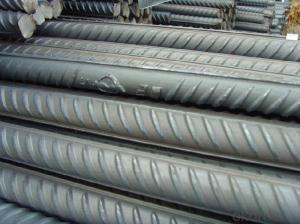Hot rolled deformed steel bars for construction
- Loading Port:
- Tianjin
- Payment Terms:
- TT or LC
- Min Order Qty:
- 25 m.t.
- Supply Capability:
- 100000 m.t./month
OKorder Service Pledge
OKorder Financial Service
You Might Also Like
Product Description:
OKorder is offering Hot rolled deformed steel bars for construction at great prices with worldwide shipping. Our supplier is a world-class manufacturer of steel, with our products utilized the world over. OKorder annually supplies products to European, North American and Asian markets. We provide quotations within 24 hours of receiving an inquiry and guarantee competitive prices.
Product Applications:
Hot rolled deformed steel bars are ideal for structural applications and are widely used in the construction of buildings and bridges, and the manufacturing, petrochemical, and transportation industries.
Product Advantages:
OKorder's deformed steel bars are durable, strong, and resist corrosion.
Main Product Features:
· Premium quality
· Prompt delivery & seaworthy packing (30 days after receiving deposit)
· Corrosion resistance
· Can be recycled and reused
· Mill test certification
· Professional Service
· Competitive pricing
Deformed bar is widely used in buildings, bridges, roads and other engineering construction. Big to highways, railways, bridges, culverts, tunnels, public facilities such as flood control, dam, small to housing construction, beam, column, wall and the foundation of the plate, deformed bar is an integral structure material. With the development of world economy and the vigorous development of infrastructure construction, real estate, the demand for deformed bar will be larger and larger..
Packaging & Delivery of HRB400 Deformed Steel Bar:
Packaging Detail: products are packed in bundle and then shipped by container or bulk vessel, deformed bar is usually naked strapping delivery, when storing, please pay attention to moisture proof. The performance of rust will produce adverse effect.
Each bundle weight: 2-3MT, or as required
Payment term: TT or L/C
Delivery Detail: within 45 days after received advanced payment or LC.
Label: to be specified by customer, generally, each bundle has 1-2 labels
Trade terms: FOB, CFR, CIF
Deformed Steel Bar in container
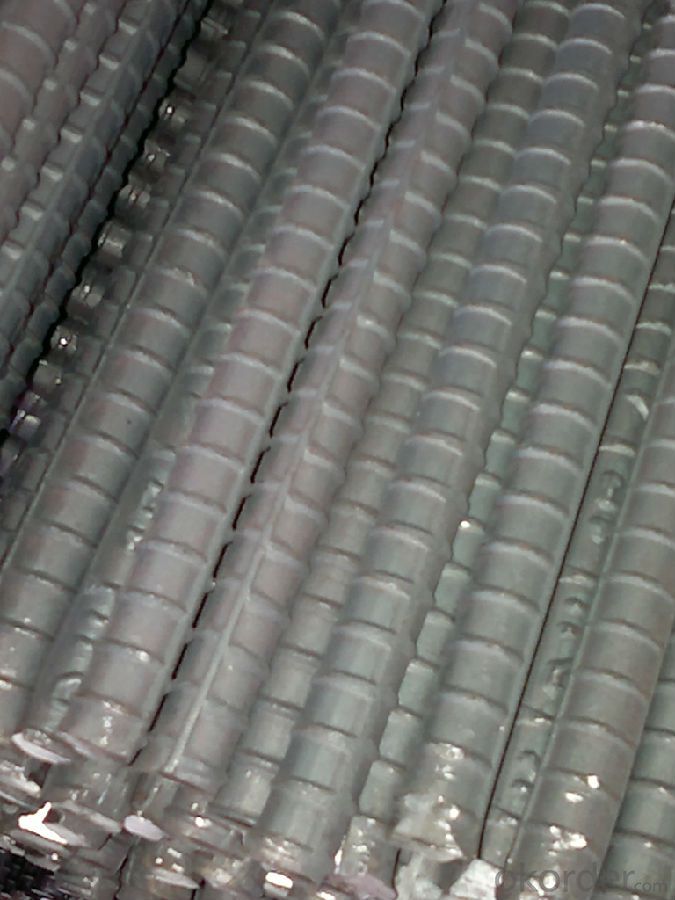
Deformed Steel Bar in factory
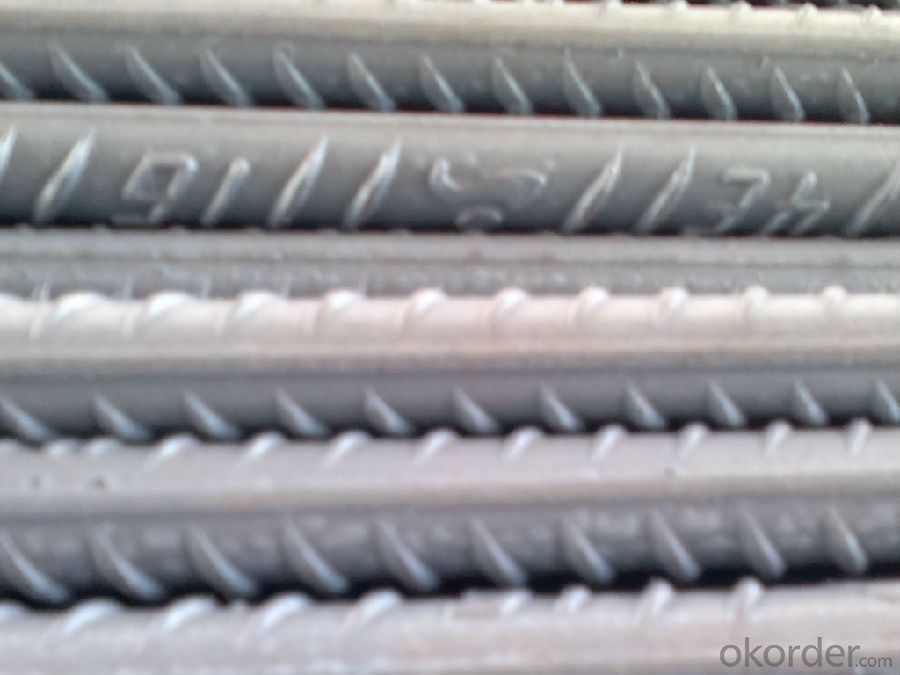
Note:
1. Our products are produced according to national standard (GB), if not, supply according to national standards (GB) or agreement as customer required.
2. Other Grade and Standard Deformed Steel Bar we can supply:
Grade: GR40/GR60, G460B/B500A/B500B/B500C,BST500S
Standard: ASTM, BS, DIN
The Minimum Order Quantity of these products is high, and need to be confirmed.
3. We can not only supply Deformed Steel Bar; if you need anything about building materials, please contact us for further information.
4. Please send us your detail specifications when inquire. We will reply to you as soon as possible. We sincerely hope we can establish a long stable business relationship.
FAQ:
Q1: How do we guarantee the quality of our products?
A1: We have established an advanced quality management system which conducts strict quality tests at every step, from raw materials to the final product. At the same time, we provide extensive follow-up service assurances as required.
Q2: How soon can we receive the product after purchase?
A2: Within three days of placing an order, we will begin production. The specific shipping date is dependent upon international and government factors, but is typically 7 to 10 workdays.
- Q: Can steel rebars be used in renovation or retrofitting projects?
- Yes, steel rebars can be used in renovation or retrofitting projects. Steel rebars are commonly used in construction projects to reinforce concrete structures, providing strength and durability. In renovation or retrofitting projects, where existing structures need to be strengthened or modified, steel rebars can be utilized to enhance the structural integrity and ensure the safety of the building.
- Q: How do steel rebars contribute to the overall occupant comfort of a building?
- Steel rebars contribute to the overall occupant comfort of a building by providing structural strength and stability. They reinforce the concrete, ensuring that the building can withstand various forces such as wind, earthquakes, and heavy loads. This enhances the safety of the occupants, assuring them of a secure and stable structure. Additionally, steel rebars help in maintaining the integrity of the building over time, reducing the risk of cracks or structural failures that could negatively impact occupant comfort.
- Q: Can steel rebars be used in structures with limited maintenance access?
- Structures with limited maintenance access can utilize steel rebars, which are commonly chosen for construction projects due to their exceptional strength and durability. These rebars can endure heavy loads and provide reinforcement to concrete structures. In structures with restricted maintenance access, steel rebars offer numerous benefits. Firstly, they boast a lengthy lifespan and are corrosion-resistant, minimizing the need for frequent maintenance. Unlike wood or aluminum, steel rebars do not decay or rot over time, rendering them suitable for structures that are challenging to reach for regular maintenance. Moreover, steel rebars can be easily examined using non-destructive testing methods like ultrasound or magnetic particle inspection. These techniques can identify any potential flaws or damage in the rebars without invasive measures, thereby ensuring the structural soundness of the building. Furthermore, steel rebars can be designed and installed in a manner that reduces the necessity for future maintenance. For instance, employing epoxy-coated rebars can provide an additional layer of protection against corrosion, prolonging the structure's lifespan and reducing maintenance requirements. However, it is crucial to acknowledge that while steel rebars are highly durable, they are not entirely maintenance-free. Over time, the protective coatings on the rebars may deteriorate, and if left unaddressed, corrosion can occur. Therefore, periodic inspections and maintenance activities must still be conducted, even in structures with limited access. In conclusion, due to their durability, corrosion resistance, and non-invasive inspection capabilities, steel rebars can be employed in structures with limited maintenance access. Nevertheless, regular inspections and maintenance are still necessary to ensure the long-term performance of the rebars and the overall structural integrity of the building.
- Q: How do steel rebars affect the shrinkage and creep of concrete?
- Concrete's shrinkage and creep behavior can be significantly influenced by steel rebars. Shrinkage refers to the concrete's volume reduction caused by moisture loss during drying, while creep refers to its time-dependent deformation under sustained load. The inclusion of steel rebars helps mitigate concrete shrinkage. As the concrete shrinks, the rigid rebars resist this reduction and provide restraint. This restraint minimizes volume changes and reduces cracking caused by shrinkage. Moreover, the tensile strength of rebars allows them to distribute stress and prevent localized cracking, further minimizing the impact of shrinkage on overall concrete performance. Regarding creep, steel rebars can increase concrete's deformation. This is because the rebars introduce additional stress and strain, leading to greater creep deflections. However, compared to factors like mix design, water-cement ratio, and curing conditions, the effect of steel rebars on creep is generally considered minor. It's important to note that proper reinforcement layout design and detailing can minimize the impact of steel rebars on shrinkage and creep. Adequate spacing, rebars cover, and reinforcement ratios optimize both concrete and rebars' performance. Additionally, the use of supplementary cementitious materials like fly ash or silica fume can reduce shrinkage and mitigate creep's impact. In summary, steel rebars are crucial in minimizing concrete's shrinkage-related issues through restraint and stress distribution. Though they may increase creep deformation, their impact is generally minor compared to other factors. Proper reinforcement design and detailing optimize concrete and steel rebars' performance in terms of shrinkage and creep.
- Q: How do steel rebars affect the constructability of projects in remote locations?
- Steel rebars can have a significant impact on the constructability of projects in remote locations. Due to their weight and bulkiness, transporting rebars to remote sites can be challenging and expensive. Additionally, the availability of rebars in remote areas may be limited, leading to delays in construction timelines. However, the presence of steel rebars is crucial for reinforcing concrete structures, ensuring their strength and durability. Therefore, careful planning and coordination are necessary to overcome logistical obstacles and ensure the successful implementation of projects in remote locations.
- Q: What is the minimum diameter of steel rebars used in construction?
- The minimum diameter of steel rebars used in construction typically ranges from 6mm to 10mm, depending on the specific application and building codes.
- Q: Can steel rebars be used in historical restoration projects?
- Yes, steel rebars can be used in historical restoration projects. They provide structural reinforcement and can help restore the stability and integrity of historical structures while maintaining their original appearance. However, careful consideration should be given to ensure that the use of steel rebars is in accordance with preservation guidelines and does not compromise the historical significance of the structure.
- Q: What is the average lifespan of a reinforced concrete structure with steel rebars?
- The average lifespan of a reinforced concrete structure with steel rebars can vary depending on various factors such as the quality of construction, maintenance, exposure to environmental conditions, and usage patterns. However, with proper design, construction, and maintenance, reinforced concrete structures with steel rebars can have an average lifespan of 50 to 100 years or more. Reinforced concrete structures are known for their durability and strength due to the combination of concrete and steel reinforcement. The concrete provides compressive strength, while the steel rebars provide tensile strength, making the structure resistant to various loads and forces. However, over time, reinforced concrete structures may experience degradation due to factors such as exposure to moisture, chemicals, temperature changes, and loading conditions. These factors can lead to the corrosion of steel rebars, which is a common concern for the longevity of such structures. Corrosion occurs when moisture and oxygen penetrate the concrete, causing the steel rebars to rust. This rusting process can lead to the expansion of the steel rebars, causing cracks in the concrete and further accelerating the deterioration of the structure. To mitigate the effects of corrosion and extend the lifespan of reinforced concrete structures, various measures can be taken. These include using high-quality concrete and steel rebars, applying protective coatings, implementing proper drainage systems, and conducting regular inspections and maintenance. With appropriate maintenance and upkeep, reinforced concrete structures can last well beyond their average lifespan. However, it is crucial to note that the lifespan can vary depending on specific conditions and circumstances. Therefore, it is essential to consult with structural engineers and industry professionals to assess and determine the expected lifespan of a particular reinforced concrete structure.
- Q: Can steel rebars be used in precast concrete walls?
- Yes, steel rebars can be used in precast concrete walls. The presence of rebars helps to reinforce the concrete and increase its strength and durability. Rebars are commonly used in precast concrete walls to provide structural integrity and resist the forces acting on the wall.
- Q: What are the guidelines for the proper anchoring of steel rebars in walls?
- The guidelines for proper anchoring of steel rebars in walls typically involve factors such as the rebar size, spacing, embedment depth, and the type of wall construction. It is important to follow building codes and structural engineering standards specific to your region. Generally, rebars should be adequately spaced and securely anchored into the surrounding concrete or masonry to ensure proper load transfer and structural integrity. Additionally, proper cover thickness should be maintained to protect rebars from corrosion and ensure long-term durability.
Send your message to us
Hot rolled deformed steel bars for construction
- Loading Port:
- Tianjin
- Payment Terms:
- TT or LC
- Min Order Qty:
- 25 m.t.
- Supply Capability:
- 100000 m.t./month
OKorder Service Pledge
OKorder Financial Service
Similar products
Hot products
Hot Searches
Related keywords
